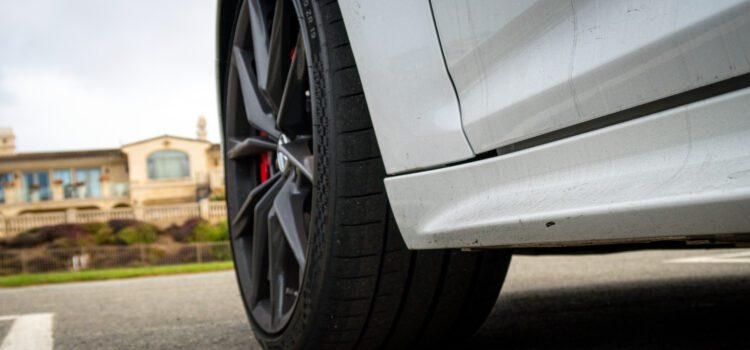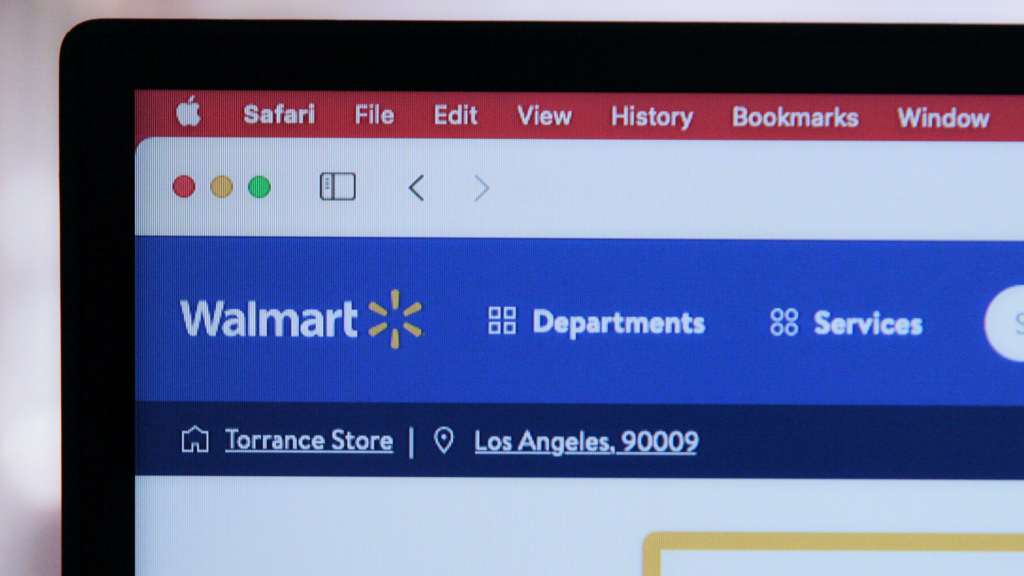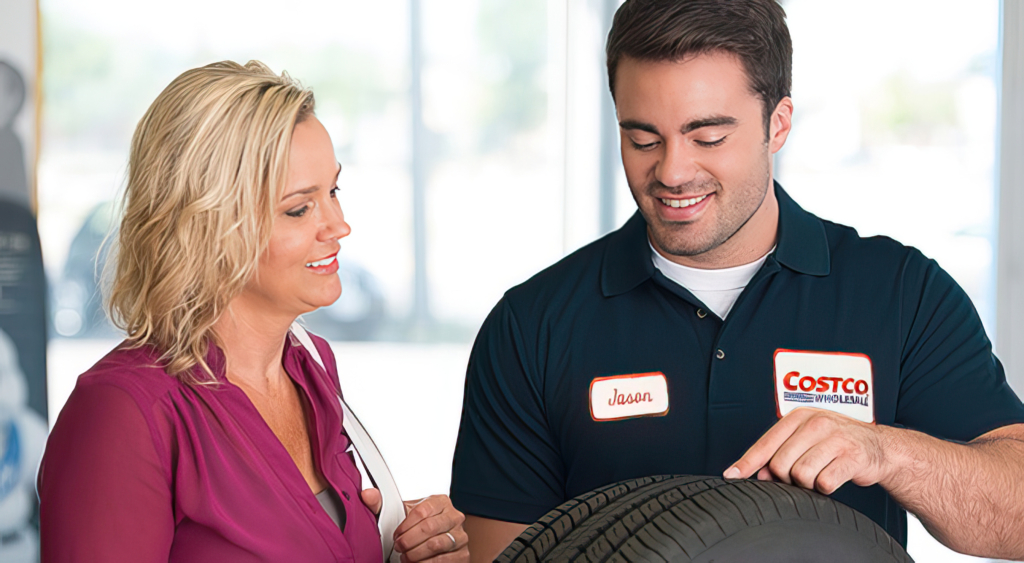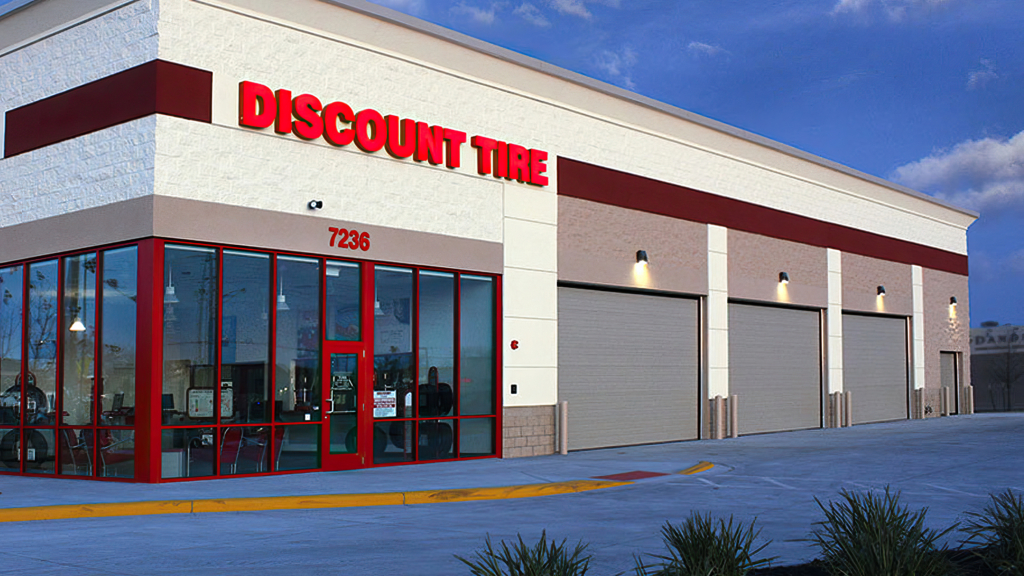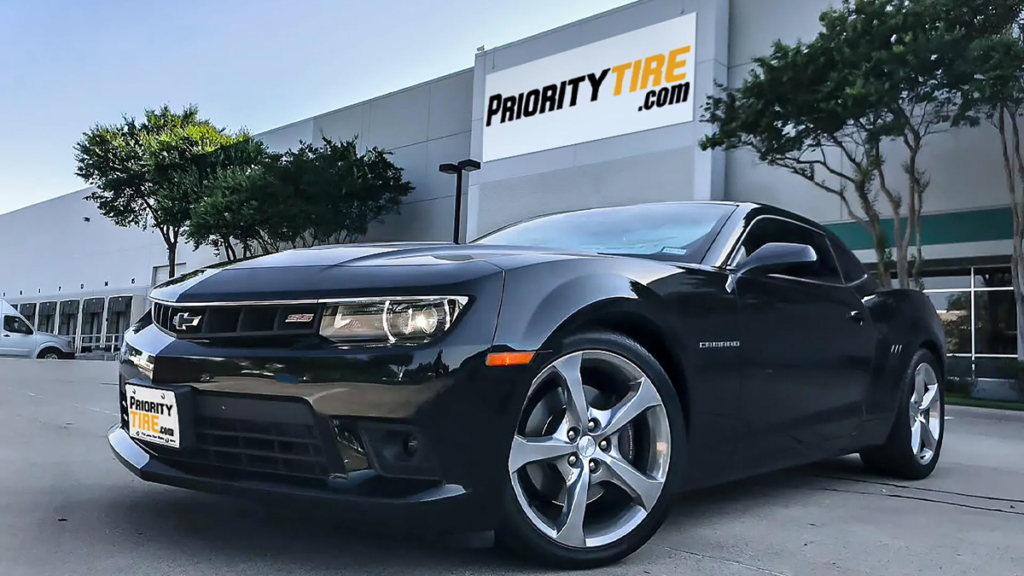How different really are all-season and high-performance tires?
Take a nice long look and tell me tires are just tires! If they were, places like Tire Rack or outlets like Tyre Reviews wouldn’t be a thing trying to hammer into peoples’ heads that there are specific tires for specific purposes. Those of you who know will know. All-seasons, performance, winter, all-terrain, etc, like the different elements in Avatar, except there is no one tire who can master all of them. Each is given a purpose for a reason, and each comes with its own array of tools and rubber compounds to get the job done.
Or so the manufacturers say. But just how different are, say, your friendly neighborhood all-season and a dedicated high-performance tire in reality? Let’s take a closer look as I swap from a set of 200-treadwear Hankook track tires to 560-treadwear Goodyear all-season performance tires in preparation for a thousand-plus-mile road trip.
Skip to section:
[Button id=’8′]
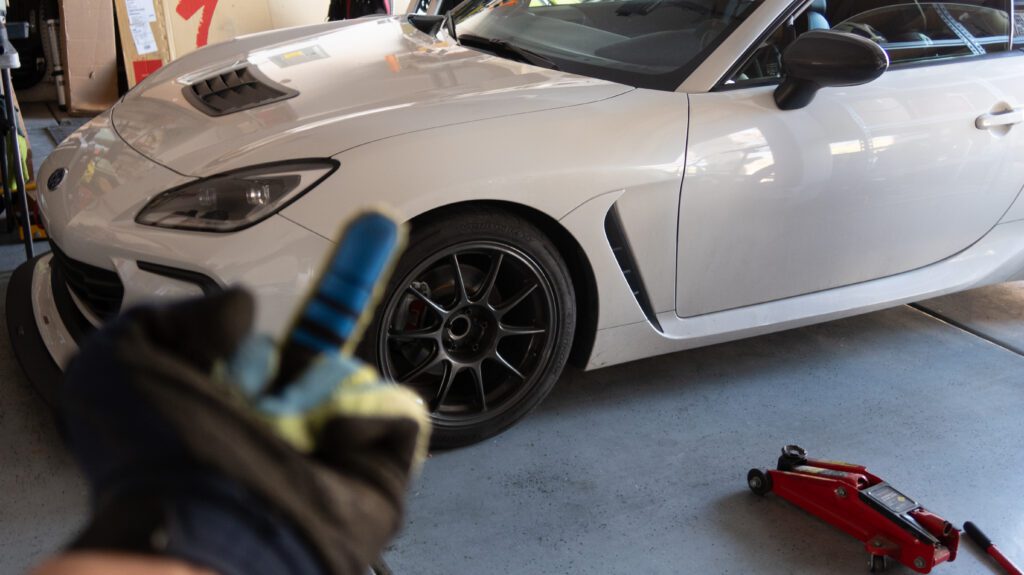
On the surface (literally)
All-season:
My all-season tires, even though they’re sports car-focused tires with an emphasis on enhanced steering response and grip over lesser all-season or economy tires, will feature an abundance of tread seldom found on any true high-performance tire. The tread will be deeper and siping, those thin cuts that greatly help evacuate moisture, will be in far greater numbers. Notice the wide, deep central grooves that funnel water away from the surface of the tire and the thinner siping that runs perpendicular to it in order to eject it. The reason for this design is simple.
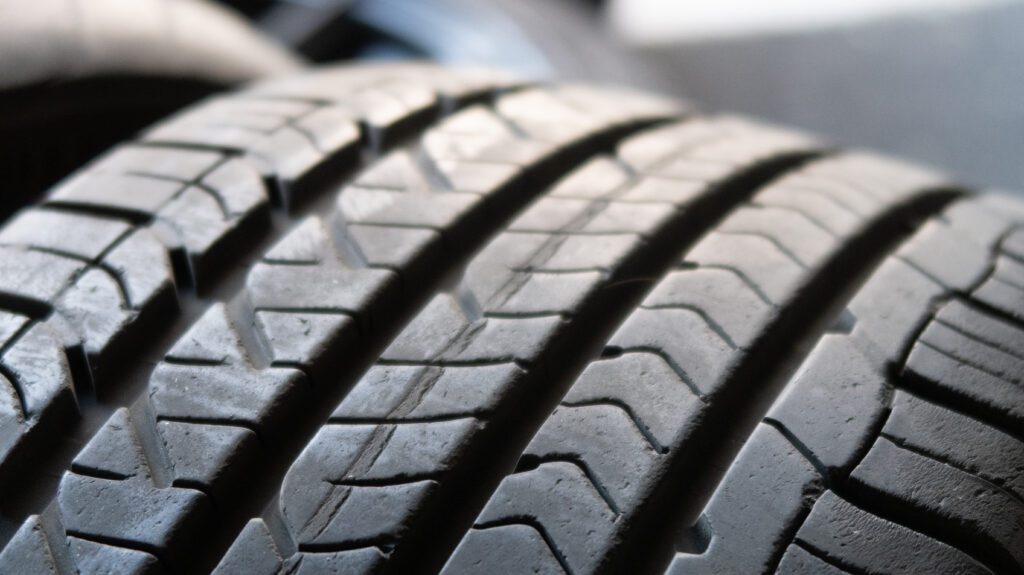
All. Season. These tires need to tackle a wide variety of conditions throughout the year, using its complex tread design to evacuate rain or grab at light snow in order to maintain a decent contact patch for the car to still grip. All-season tires aren’t created equally, however, and a performance-oriented one like this Goodyear Eagle Sport All Season will be designed with a firmer rubber compound and stronger construction (more on that in a bit) to not have as much tread squirm in the name of steering responsiveness. Other all-seasons may be designed with more winter capability in mind, trading outright dry grip, tread life, and steering feel for a design that can better grab at deeper snow, like a Michelin Cross Climate.
High-performance:
Now, let’s look at the rubber that just came off the car, a 200-treadwear track day tire, the pinnacle of street-legal ultra-high-performance. Aside from being “performance-oriented” like the Goodyear, this Hankook Ventus RS4 is pretty much the polar opposite of what you can expect an all-season to look like. There’s hardly any damn tread to begin with! There are a couple of shallow grooves and some angled tread for maybe evacuating water when it feels like it on a Tuesday afternoon. It’s all for a higher cause.

Even the best summer performance tires’ tread is a compromise between comfort, everyday use, and street legality. However, as you climb the hierarchy of tires, that compromise fades as these tires realize their true purpose: to corner fast as hell!
Tread and overly soft rubber leave room for flex and squirm, which dampens steering responsiveness. It also removes crucial rubber from the surface where it can otherwise form a greater contact patch. More rubber meeting the road means more grip, so why not have more rubber on a car whose purpose is backroad and on-track performance? Of course, this means a greater chance at hydroplaning, too. Less tread means water has fewer places to go, so drivers must exercise caution on a rainy track day. Some top-dollar summer performance tires are actually shockingly good at wet weather grip, but those abilities gradually disappear the more focused the tire on track duty.
What kind of rubber meets the road?
All-season:
Starting with the rubber itself, all-season tires are often constructed from a softer, higher-silica compound intended to work in a wider temperature range and provide greater comfort. They can still handle hot summer days, albeit they’ll likely overheat and lose traction under the stresses of performance driving quicker than their more dedicated summer-oriented counterparts. But they can also resist freezing in frigid temperatures and remain soft and pliable. Of course, they’re no substitute for a true winter tire, but they’ll survive.

Construction varies greatly among the subcategories of all-season tires. In the case of a performance-oriented all-season tire, we can usually expect a soft center tread block for improved ride quality but firmer outer shoulders and a stronger sidewall for reduced squirm and enhanced steering response and traction during spirited driving. It’s similar to the construction of a summer tire but not often at their level.
My Goodyears feature the company’s RaceWrap Construction Technology, which is its fancy name for an extra ply that wraps around the sidewall and down to the bead, increasing sidewall strength and, therefore, improving response. Given that all-seasons have much deeper tread and that they’re not generating as much friction due to lower overall grip, expect them to have exceptional lifespans, with my Goodyear’s treadwear rating nearly tripling that of the Hankook track tire.
High-performance:
Tires like these Hankooks are designed ooey-gooey in comparison. Their rubber is optimized for warm weather performance and the trials of limit cornering, which can literally melt chunks of tire off and leave your tires looking like they’ve been shaved with a red-hot straight razor. Resultingly, this rubber compound has a significantly shorter lifespan and performs poorly in the bitter cold, usually anything below 45 degrees Fahrenheit, leaving you with the traction of a Green Machine tricycle and its hard plastic drift wheels.

No grip. No snow traction. And probably no chance of clawing your way out of that ditch should you tempt fate. Keep a set of all-seasons on hand should you live in a place where the winters aren’t so friendly. However, nowadays, many summer tires and some 200-treadwear tires, like these Ventus RS4s, may use a higher-silica compound in their center tread blocks for improved wet performance.
Shoulders and sidewalls are usually firmer for any performance tire to reduce squirm and increase stability and steering response, but this may result in slightly harsher ride quality. In many cases, ultra-high-performance summer and track day tires are built with extra reinforcement all around, either with extra steel or nylon belts, to resist squirming that could hinder stability during hard driving.
How they drive
All-season:
Fascinating. The all-season tires can handle all seasons.
Mostly. On my 1,320-mile journey to and from Reno, Nevada, my BRZ was met with enough rain and snow showers to have easily stranded me on my previous tire setup. Expectedly, the outright dry grip was diminished, and the softer rubber lined in gashes and cuts left me with comparatively numb steering and slightly slower reflexes than the Hankooks. However, the Goodyears made good on their mission statement by maintaining what grip was available, even as temps dipped in the 40s and sometimes well below that. Rain was easily dispatched. Any slippage I got when I felt like being a jackass was controlled, linear in its progression, and easy to reign in.
On light snow and slush, the Goodyear all-seasons helped my car stay right on course, whereas my Hankook track tires or even my old Mustang’s Michelin summer tires would slip and slide with little chance of recovery. Just as advertised, the treads and sipes did their job, and although I dared not tempt fate and eclipse these 55-mile-per-hour limits, I can confidently say these all-season performance tires can save you in a pinch should proper winter tires not be available.
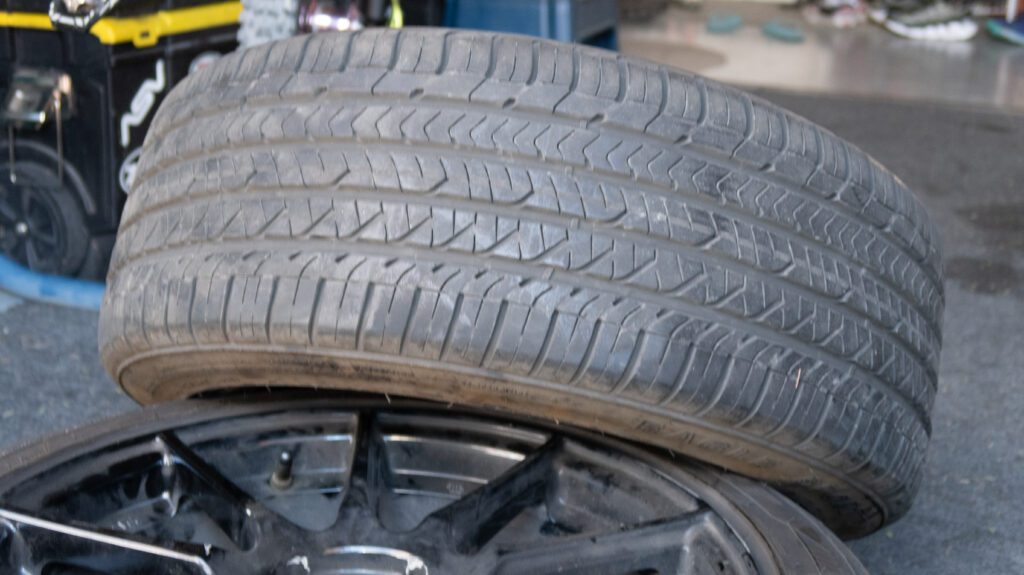
But seriously, if you can, buy winters or at least a more aggressive all-season with that 3-Peak Mountain Snowflake symbol. These were good, not great. I know there are even better performance all-seasons out there, ones acclaimed for their winter handling in particular. You always get that sense there was never enough traction with the Goodyears to drive as you normally would on a warmer, dryer day, as the car sometimes wriggled about in its lane. But keep off the throttle and let the engine sit just out of its powerband, and the BRZ was A-okay.
High-performance:
Great traction for an all-season hardly scratches the surface of what a 200-treadwear performance tire can do. Instantly, the difference when swapping from the Goodyears was apparent. I lost some NVH ditching the Hankooks, which was nice, but the Hankooks could turn in quicker and bite harder in the corners. By comparison, response is ferocious. But that sheer level of grip tends to create a somewhat darty sensation that can be a bit annoying for those who aren’t used to such aggressive setups. Some of that ankle-biter demeanor may also be attributed to the car’s alignment, so I won’t pin it all on the tires.
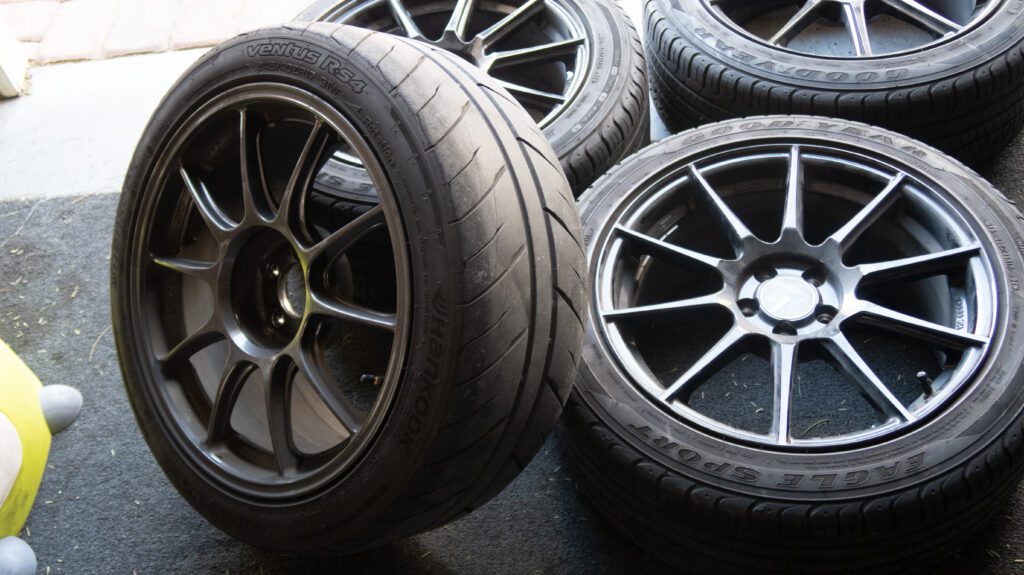
By the way, this is just when the tires are cold. Heat them up, as you should with any good track day tire, and grip rises exponentially. Unfortunately for me, you can never get enough heat into these Hankooks on a casual canyon run, even after a few miles. And Hankook RS4s are known for requiring quite a few warm-up laps before coming up to the temps they need to be at, an allegedly common quirk of the 200-treadwear “endurance” tire. Fortunately, being an endurance tire means I can squeeze more mileage out of this rubber on the road or track, with treadwear being reportedly good enough that consumers just casually run this as their street tire and see anywhere between 14,000 to 20,000 miles out of them. Proper track time, however, will see those numbers cut down to a fraction with how much grip they can generate.
In the few times I got caught with my pants wet, the Hankook RS4s were actually commendable. You sometimes felt them shimmy about if you weren’t careful, constantly reminding you not to goose the go pedal should you not want to see how quickly you can overwhelm what little water evacuation they have. I can’t speak for other 200-treadwear rubber, but the Hankooks were doable. I can commute on them. But I sure am glad I copped the Goodyears for that very reason instead.




FAQs
Can I drive in the winter with an ultra-high-performance or an all-season tire?
All-season? You can probably get away with it. Their softer compounds, wider temp ranges, and abundance of grooves, siping, and tread allow them to better withstand cold weather and evacuate moisture than a summer tire or track day tire. Not all all-season tires are created equal, and some are better than others for this task. Do your research when shopping for specific tires and see if the one you want is viable for where you live. As for summer performance tires, don’t even try it. They’ll freeze and leave you with a useless rubber compound and not enough read to grab at ice and slush. Take it from me, the idiot, don’t even try it in light snow.
Can all-season tires replace a winter tire?
Depending on the tire, sure. If where you live doesn’t see feet of snow on a regular basis or suffer from rampant black ice on every side street, you can likely get away with an all-season in the winter. Again, do your research to see if the tires you’re interested in are as capable as you need them to be. A general good rule of thumb is to hunt for those bearing the 3-Peak Mountain Snowflake symbol to denote enhanced winter weather abilities, but even then, the best all-seasons are no match for purpose-built winter tires. If you live somewhere where the winters can get a little extreme, please consider a real winter tire. Your insurance company will probably thank you.
Can I go to the track on an all-season tire?
The better question is, who’s going to stop you? Go right on ahead. Be that silly goose. Most track day organizers don’t care as long as tires are in good condition with ample tread depth and no chunking, cording, or any other signs of damage that may prove to be a safety hazard. Just beware of your lowered grip levels and the tire’s ability to overheat under extreme stress. If your goal is to practice at-the-limit handling behavior, an all-season is probably not a bad idea as your limits will be lower, enabling you to practice managing under or oversteer without going to extreme speeds.
Where can I buy tires?
Lots of places.
Sorry, that didn’t help. Maybe our tire buying guide will. Lots of sources exist for tire buying, both online and in-person. Tire Rack is an increasingly popular and knowledgeable source and an affiliate partner of Acceleramota, with their own in-house testing team for evaluating tires and pitting them against other tires in their classes. Goodyear is an obvious choice if you like their rubber and are also a partner of the site. They also have service centers should you want to schedule an installation. Discount Tire is a popular chain of tire stores and installers, and you can probably find a couple of them in any zip code.


